According to the American Bar Association 2016 Legal Technology Survey Report, only 38 percent of lawyers are using cloud computing for tasks relating to their practice. Overall, 53 percent report that they do not use cloud computing at all while about 10 percent say they don’t know if they do or not.
In reality, these attorneys may not be aware that they’re probably already using the cloud but just don’t know it.
So what is the cloud, and why should you care?
As a metaphor for the Internet, the cloud encompasses commonly used services that don’t run on your firm’s servers at the office and aren’t stand-alone software installed on your laptop – they generally run in data centers, owned and operated by third parties and require an Internet connection to fully function.
Examples of cloud-based solutions many people already use include Google 
In cloud-speak, these examples fall under the umbrella term, “software as a service,†or SaaS. People typically access these applications from either a web browser or client software that connects to the cloud service. Paid services typically follow a subscription model. Similarly, Infrastructure as a Service (IaaS) empowers you to use computing, storage and network services on-demand (without requiring hardware ownership) using the provider’s machines and storage. Meanwhile, Platform as a Service caters to software developers.
Besides these three cloud service models, you’ll notice that almost anything can become “as a Service.†Some examples include, Disaster Recovery as a Service, Desktop as a Service, IT as a Service, Security as a Service, Storage as a Service. This list goes on as well.
You will undoubtedly also hear about private, public and hybrid clouds in the media (i.e., the three basic cloud computing models), so here’s a brief summary:
It’s really about how much control you have over cloud resources. In a private cloud, you’re not sharing computing resources with other companies. Hardware, computing, storage, and networking resources are dedicated for your company’s use and under its control.
But in a public cloud, these resources are shared, like multi-tenancy in an office building (with safeguards, of course). This is often called colocation. On the other hand, a hybrid cloud has attributes of both. Servers that you own onsite connect with resources in the public cloud. An example would be your time and billing software running on a server at the office while mail services are being handled in the cloud with Microsoft Office 365.
Now that the cloud jargon is out of the way, here are some the benefits of a cloud solution. By moving from the traditional on-premises computing model to an on-
If services are in the cloud, your IT department doesn’t have to purchase and maintain servers that house those services. Like the utility model (think electricity bills), services tend to be subscription-based and pay-as-you-go only for what you need. If you’re running out of storage space on a file server in the cloud, for example, you can expand storage capacity in minutes, not weeks. Not surprisingly, businesses are increasingly looking to the cloud to meet many – if not all – of their computing needs.
Ultimately, technology is just a tool to help you get your job done more effectively and efficiently and let you better represent your clients. The cloud is a game changer that cannot be ignored. Consider the benefits of the cloud and how you’re already using some of its services. Transitioning to the cloud is only getting easier. The technological forecast is indeed, very cloudy, but in a good way.
Are you ready to fully experience the benefits of the cloud? Contact us.
{{cta(‘a12c8bd7-3e9c-4275-af5c-56d9baed3301’)}}

